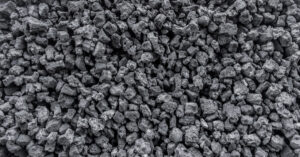
Ukraine has started importing gas via Slovakia, according to a Facebook post by Serhiy Makogon, former head of the Ukrainian Gas Transmission System Operator (OGTSU).
“Previously, imports came from Hungary and Poland, but the cheaper Hungarian route is already fully loaded, so suppliers are forced to buy more expensive capacity from Slovakia,” he wrote.
According to the former head of GTSOU, the average daily import is currently around 14.5 million cubic meters, but in order to accumulate 13.6 billion cubic meters by November 1, imports need to be increased by 2-3 times. At the same time, Slovakia has the largest import capacity – 42 million cubic meters per day.
As reported with reference to Makogon, in order to achieve last year’s planned targets for gas reserves in underground storage facilities (UGS), Ukraine needs to import at least 5 billion cubic meters by November 1, i.e., approximately 870 million cubic meters per month or 29 million cubic meters per day.
He noted that $2-2.5 billion is needed to import the minimum 5 billion cubic meters, of which $0.4 billion has already been provided by donors and may be provided further. At the same time, he believes that funds for gas purchases can also be found within the country, in particular from the budget through direct recapitalization of Naftogaz or through debt repayment schemes involving mutual settlements.
According to Gas Infrastructure Europe (GIE), Ukraine switched from gas withdrawal from underground storage facilities to gas injection on April 17. According to them, this season’s withdrawal lasted from November 1, when there were 87.037 TWh (8.315 billion cubic meters) in UGS facilities, and ended on April 16 at 7.062 TWh (0.675 billion cubic meters) – the lowest level in history.
GIE indicates that this year Ukraine ended the heating season with reserves at 2.22% of the maximum UGS capacity, while last year the withdrawal season ended on March 30 with reserves of 11.12 TWh (3.388 billion cubic meters), or 11.12% of the UGS capacity.
In turn, according to former Energy Minister Olga Buslavets, the total level of natural gas reserves in Ukrainian UGS facilities at the end of last week was 6.1 billion cubic meters (including 4.7 billion cubic meters of “buffer gas”), which is 31% lower than last year.
Over the past week, net gas imports to Ukraine (excluding short-haul) averaged 14.4 million cubic meters per day (from Hungary and Poland), while daily gas consumption in Ukraine rose to 30-33 million cubic meters per day, according to the European platform. per day (from Hungary and Poland), while daily gas consumption in Ukraine increased to 30-33 million cubic meters per day, which, according to the European platform
Agregated Gas Storage Inventory (AGSI), allows no more than 27 million cubic meters per day to be pumped into UGS facilities.

In January-April of this year, Ukraine increased imports of coke and semi-coke in physical terms by 64.2% compared to the same period last year – to 256,628 thousand tons from 156,255 thousand tons.
According to statistics released by the State Customs Service (SCS) on Tuesday, imports of coke in monetary terms increased by 47.8% during this period, to $82.920 million. It was mainly imported from Poland (86.87% of supplies in monetary terms), Indonesia (11.54%), and the Czech Republic (1.57%).
During the period in question, Ukraine exported 3 tons of coke worth $2,000 to Albania.
As reported, Metinvest suspended the operations of the Pokrovsk Coal Group in January this year due to changes in the situation on the front line, power shortages, and the deterioration of the security situation.
Last year, Ukraine increased imports of coke and semi-coke in physical terms by 2.01 times compared to 2023, to 661,487 thousand tons, importing it mainly from Poland (84.76% of supplies in monetary terms), Colombia (7.74%), and Hungary (2.69%). In monetary terms, imports increased by 81.9% to $235.475 million.
In 2024, the country exported 1,601 thousand tons of coke, 84.76% of which went to Moldova ($368 thousand) to Moldova (99.18%) and Latvia (0.82%), while in January, March, October, and November 2024, there were no exports, whereas in 2023, exports amounted to 3,383 tons worth $787 thousand.

Imports of electric generator sets and rotary electric converters (HS code 8502) to Ukraine in January-April 2025 increased sevenfold in monetary terms compared to the same period in 2024, reaching $516.31 million, according to statistics from the State Customs Service (SCS).
According to SCS data, electric generators and converters were most often imported from the Czech Republic (18% of total exports of these products, or $93.7 million), Austria (15.6%, or $80.3 million), and the United States (15%, or $77.3 million), while a year earlier it was the Czech Republic ($15.36 million), Austria ($15.2 million), and China ($14.1 million).
In particular, in April, imports of this equipment increased almost fivefold compared to April last year, but decreased by 6% compared to March this year, to $83.14 million.
Ukraine exported electric generators in January-April in insignificant volumes ($1.9 million), mainly to Latvia, Bulgaria, and Turkey.
In addition, according to the State Customs Service, imports of electric accumulators and separators to Ukraine increased 2.3 times in four months to $288.35 million, mostly from China (78.4%), as well as Taiwan (5.3%) and Bulgaria (4.1%).
At the same time, in April, imports of these products increased by more than 81% compared to April 2024, to $70.52 million, which is also 7% higher than in February 2025.
In four months, Ukraine exported batteries worth $17.1 million, mainly to Poland (27.9%), France (15.9%), and Germany (11.3%).
As reported, at the end of July 2024, Ukraine exempted the import of electric generator equipment and batteries from customs duties and VAT.
According to the State Customs Service, in 2024, imports of electric generators and converters to Ukraine increased by 3.7% compared to 2023, to $732.5 million, and batteries more than doubled, to $950.6 million.

In January-April of this year, Ukraine significantly increased imports of aluminum ore and concentrate (bauxite) in physical terms compared to the same period last year, to 13,494 thousand tons from 163 tons.
According to statistics released by the State Customs Service (SCS) on Tuesday, during this period, imports of bauxite in monetary terms increased 10.9 times, to $1.476 million from $136 thousand.
At the same time, imports came mainly from Turkey (82.24% of supplies in monetary terms) and China (17.76%).
Ukraine did not re-export bauxite in 2025, as in 2024 and 2023.
As reported, in 2024, Ukraine increased imports of bauxite in physical terms by 77.4% compared to 2023, to 35,173 thousand tons, and in monetary terms by 74%, to $4.107 million. Imports were mainly from Turkey (78.48% of supplies in monetary terms), China (19.48%), and Spain (1.9%).
In 2023, Ukraine imported 19,830 tons of bauxite worth $2.360 million.
In 2022, Ukraine reduced imports of aluminum ores and concentrates (bauxite) in physical terms by 81.5% compared to the previous year, to 945,396 tons. Imports of bauxite in monetary terms decreased by 79.6% to $48.166 million. Imports came mainly from Guinea (58.90% of supplies in monetary terms), Brazil (27.19%), and Ghana (7.48%).
Bauxite is an aluminum ore used as a raw material for the production of alumina, which is then used to produce aluminum. It is also used as a flux in ferrous metallurgy.
Bauxite is imported into Ukraine by the Mykolaiv Alumina Plant (MHP).

In January-April 2025, Ukrainian enterprises imported copper and copper products worth $61.62 million, which is 16.2% more than in the same period of 2024. Exports grew by 16.1% to $29.13 million. In April, imports amounted to $15.13 million, while exports amounted to $7.78 million.
Copper is widely used in electrical engineering, pipe manufacturing, alloy production, medicine, and other industries.

Imports of transformers, inductors, and chokes to Ukraine in January-April 2025 increased 2.5 times compared to the same period in 2024, reaching $338 million, according to statistics from the State Customs Service.
According to published data, during this period, products were imported mainly from China, worth $279 million (82.5% of all imports of these goods), while a year earlier, transformers and chokes worth $66.1 million (48.4%) were imported from this country, i.e., imports increased 4.2 times.
In addition, transformers were imported from Germany ($17.4 million) and Turkey ($13.9 million), while in January-April 2024, imports from Turkey amounted to $37.1 million, and from Italy – almost $5 million. In particular, in April, imports of this equipment increased by 50% compared to the same month last year, but decreased by 22.3% compared to March this year, to $55.2 million. China’s share was 48.7%.
At the same time, Ukraine exported transformers, inductors, and chokes worth $8.37 million in the first four months of this year, compared to $5.64 million last year, mainly to Germany, Hungary, and Poland.
According to the State Customs Service, imports of transformers, inductance coils, and chokes in 2024 more than doubled compared to 2023, reaching $596.11 million, with imports from China increasing 2.5 times to $400.48 million.